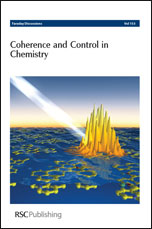Exploring the role of phase modulation on photoluminescence yield
Abstract
We report an investigation to elucidate the mechanisms of control in phase-sensitive experiments in two molecular systems. A first inspection of optimization procedures yields the same experimental result: increase in the emission efficiency upon excitation by a phase modulated pulse in a two-
- This article is part of the themed collection: Coherence and Control in Chemistry

 Please wait while we load your content...
Please wait while we load your content...